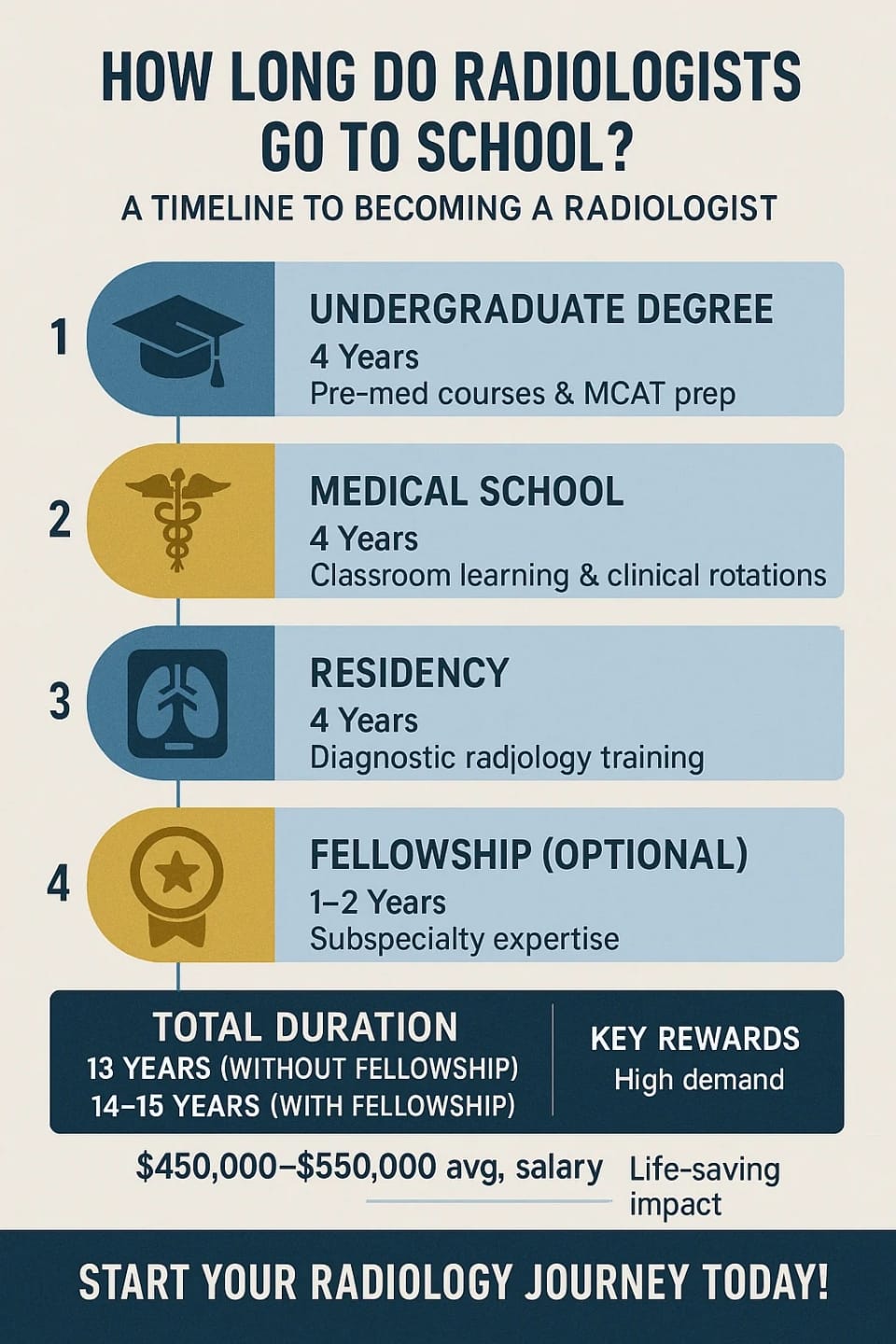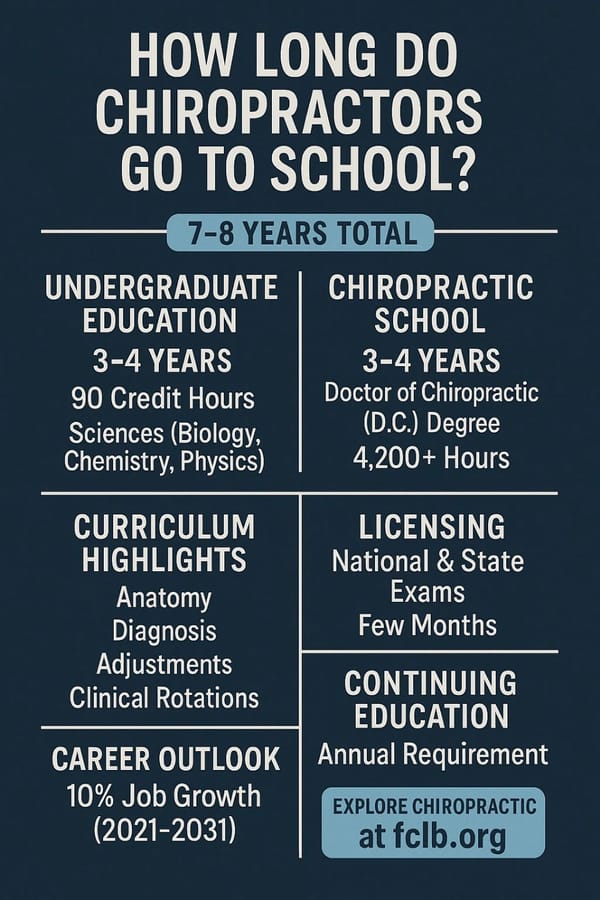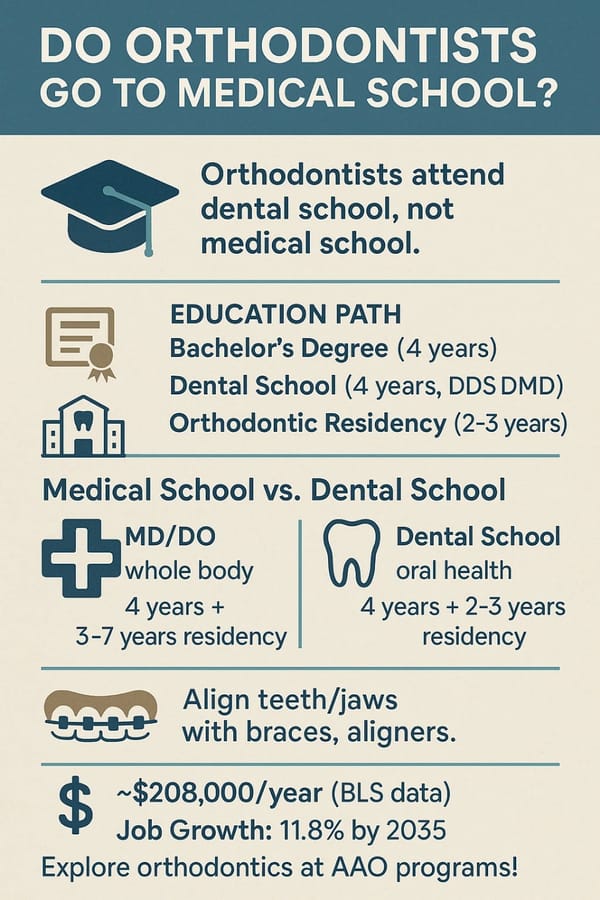What Is the Duration of Training Required for Someone to Become a Radiologist? A Complete Guide
Imagine using cutting-edge technology to uncover hidden clues that save lives—welcome to the world of radiology! If you’re wondering, what is the duration of training required for someone to become a radiologist?, you’re asking a question many aspiring doctors ponder. The path to becoming a radiologist is a long one, demanding years of dedication, but the payoff is immense: a career with high demand, impressive salaries, and the power to transform patient outcomes. This guide explores every step of the journey, from undergrad to specialization, offering a clear timeline and practical insights. Whether you’re a high school student eyeing medicine or a professional considering a career shift, this article will light the way.
Why Choose Radiology? The Pull of a Dynamic Field
Radiology is where innovation meets impact. Radiologists use tools like X-rays, MRIs, and CT scans to diagnose diseases, acting as healthcare’s detectives. Their work guides critical treatment decisions, blending technology with human connection. But how long does it take to gain the skills for this role? The training is extensive, spanning over a decade, and understanding each phase is key to deciding if radiology is your calling. Let’s dive into the timeline, with real-world details to ground the journey.
The Training Path to Becoming a Radiologist
Becoming a radiologist involves four main stages: undergraduate education, medical school, residency, and often a fellowship. Each step builds expertise, culminating in the ability to interpret complex medical images with precision. Here’s a deep dive into what each entails and how long it takes.
Undergraduate Education (4 Years)
The first step is a bachelor’s degree, typically taking four years. While you can major in any field, most future radiologists choose biology, chemistry, or related sciences to meet medical school requirements. Courses in biology, physics, organic chemistry, and math prepare you for the Medical College Admission Test (MCAT), a gateway to medical school.
The American University of Antigua emphasizes that a GPA of 3.5 or higher strengthens medical school applications. Beyond grades, clinical experience is vital—think volunteering at a hospital, shadowing doctors, or joining research labs. I recall shadowing a radiologist during my undergrad; seeing them decode an MRI was like solving a high-stakes puzzle, cementing my interest in the field.
Medical School (4 Years)
Next up is medical school, another four years of intensive study. The first two years focus on classroom learning—anatomy, physiology, pharmacology, and pathology—building a foundation for clinical work. The University of Medicine and Health Sciences highlights that students also learn medical ethics and patient interaction during this time.
The final two years involve clinical rotations, where you work in hospitals across specialties, including radiology. These rotations let you observe radiologists analyzing scans and collaborating with teams, offering a glimpse into the career. You’ll also need to pass licensing exams, such as the United States Medical Licensing Examination (USMLE) for MD students or COMLEX for DO students, as noted by the Cleveland Clinic.
Residency in Diagnostic Radiology (4 Years)
After medical school, you’ll enter a four-year residency in diagnostic radiology. This hands-on phase is where you master skills like interpreting X-rays, CTs, and MRIs, and performing image-guided procedures. According to Research.com, residents rotate through subspecialties—neuroradiology, musculoskeletal imaging, interventional radiology—gaining broad expertise.
Residency is demanding, with long hours and high responsibility. Friends in residency have described it as a rollercoaster: exhausting yet thrilling, as each scan could reveal a diagnosis that changes a patient’s life. By the end, you’re equipped to practice independently or pursue further specialization.
Fellowship (1-2 Years, Optional)
While optional, over 90% of radiologists choose a fellowship, lasting one to two years, to specialize in fields like interventional radiology, pediatric radiology, or breast imaging. The Cleveland Clinic explains that fellowships enhance skills and open doors to niche roles. For instance, interventional radiology, which involves minimally invasive procedures, often requires a two-year fellowship due to its complexity.
Fellowships let you shape your career. A colleague who pursued a neuroradiology fellowship shared how it deepened her expertise in brain imaging, leading to opportunities in cutting-edge research.
Total Training Duration: A Clear Timeline
So, how long does it take to become a radiologist? Here’s the breakdown:
| Stage | Duration | Key Focus |
|---|---|---|
| Undergraduate Degree | 4 years | Pre-med courses, MCAT preparation |
| Medical School | 4 years | Classroom learning, clinical rotations |
| Residency | 4 years | Diagnostic radiology training |
| Fellowship (optional) | 1-2 years | Subspecialty expertise |
| Total (without fellowship) | 13 years | |
| Total (with fellowship) | 14-15 years |
Without a fellowship, the training takes 13 years post-high school. Including a fellowship, it extends to 14-15 years, as confirmed by Radiology Key. This timeline reflects the expertise needed to handle the high-stakes role of diagnosing conditions through imaging.
Factors That Can Affect the Timeline
The 13-15-year range is standard, but variations happen. Some students complete their bachelor’s degree in three years, though the rigorous pre-med track makes this challenging. Others take gap years to gain experience, retake the MCAT, or address personal matters, adding time. Dual-degree programs, like MD/PhD paths, can extend training by 2-4 years for those combining research with clinical practice, as noted by itslifebymaggie.com.
Life events—financial hurdles, family responsibilities, or burnout—can also slow progress. Yet, the structured nature of medical training, with clear milestones, keeps most students on track.
Why Invest So Many Years in Radiology?
The lengthy training might seem daunting, but radiology’s rewards make it worthwhile.
Strong Demand and Career Stability
Radiology is a high-demand field, fueled by an aging population and advancements in imaging. The Bureau of Labor Statistics projects steady growth for physicians, with radiology seeing increased need for diagnostic expertise. Caliber Health points out that underserved areas offer radiologists lucrative opportunities, enhancing job security.
High Earning Potential
Radiologists are among the top earners in medicine. Salary.com reports an average salary of $453,190 in 2025, with top performers exceeding $500,000. AMN Healthcare cites typical ranges of $450,000–$550,000, varying by subspecialty and location. For example, ZipRecruiter shows averages of $390,712 in Washington and $307,500 in Florida.
Meaningful Impact
Radiologists save lives by detecting issues early—spotting a tumor on an MRI or a fracture on an X-ray. The Cleveland Clinic underscores their role in shaping treatment plans, making the work both intellectually rewarding and emotionally fulfilling.
Radiology’s Future: Adapting to Change
The field is evolving with technology, especially artificial intelligence (AI). Some worry AI could disrupt radiology, but Ben White argues it will enhance radiologists’ work, improving accuracy without replacing them. New tools like 3D mammography and PET-MRI are expanding possibilities, keeping radiologists central to healthcare, as noted by SM Mirror.
Practical Tips for Aspiring Radiologists
Ready to start? Here’s how to navigate the journey:
- Prioritize science courses, aim for a high GPA, and seek clinical exposure early—volunteer or shadow professionals.
- Study 3-6 months, targeting a score above 510 for competitive applications.
- Use rotations to explore radiology and confirm it’s your fit.
- Connect with radiologists through conferences or groups like the American College of Radiology for mentorship.
- The path is long—prioritize mental and physical health to stay resilient.
Conclusion: Is Radiology Your Path?
Training to become a radiologist takes 13-15 years, from undergraduate studies through residency and, for many, a fellowship. It’s a significant commitment, but the rewards—financial stability, intellectual challenge, and life-changing impact—are unmatched. If you’re fascinated by technology and driven to solve complex problems, radiology could be your future. Take the first step: explore pre-med programs, reach out to mentors, or share your thoughts in the comments. Your journey begins with a single question—what’s next?






